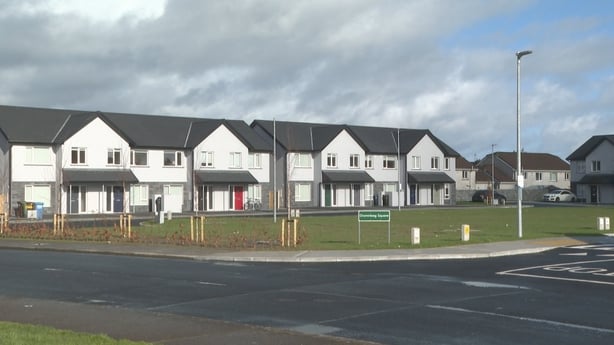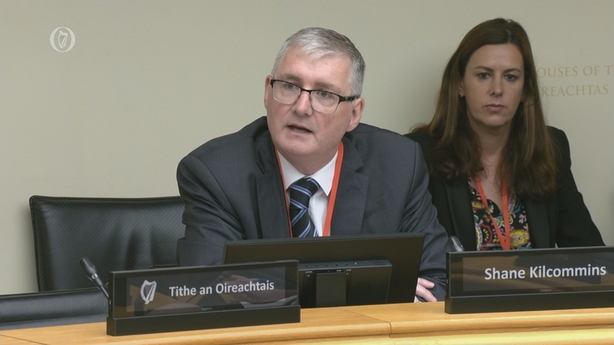The State's spending watchdog has criticised University of Limerick's handling of two property deals in 2019 and 2023 which resulted in combined losses of €8.2 million.
The Comptroller and Auditor General (C&AG) found that no formal valuation was done on the Honan's Quay site in Limerick city centre prior to its purchase.
It found that the university’s own finance and asset management committee (FHRAMC) was bypassed, even though it has a specific remit to evaluate and report on major capital acquisitions and that the college used an external property adviser to negotiate the deal.
That external adviser provided an "ad hoc" valuation.
"Given the proposed additional spending of €5 million on the site cost, and the potential change in the nature of the development, the lack of a FHRAMC evaluation should have been a key concern for the Governing Authority" the C&AG has found.
On the lack of a formal valuation, the C&AG report said: "The University neither sought nor received a formal valuation of the building/site to underpin the offers submitted to the vendor or the final price agreed.
"Under the Public Spending Code, at least one formal valuation is required prior to agreement of a property acquisition."
We need your consent to load this rte-player contentWe use rte-player to manage extra content that can set cookies on your device and collect data about your activity. Please review their details and accept them to load the content.Manage Preferences
It also found that apart from the advice and information received from the external property advisor, "no additional work appears to have been undertaken during final negotiations in relation to assessing the condition or development potential of the building or site at Honan's Quay, any planning issues, legal issues or the availability of funding for a potentially much bigger development".
It found that the site was purchased "without a coherent funding plan being in place for its development".
Five years after the purchase of the Honan’s Quay site, UL "has not yet determined how it intends to use the Honan’s Quay site in the medium to long term".
The report describes in stark terms how the cost of the proposed acquisition rose from an initial €3m to more than €8m over the course of seven months.
"A succession of progressively increasing offer amounts were referenced in emails received by the President and Deputy President between September 2018 and April 2019, beginning with a suggested offer of €3 million based on comparative market values.
"Thereafter, higher potential offers were mentioned, apparently based on speculative property development options and likely target investment yields. The expectation in September 2018 was that a deal might be done at a price of €5 million to €6 million.
"The University’s initial formal offer was €6.5 million, and the final offer accepted by the vendors was €8 million, plus €343,000 to cover the vendor’s VAT liabilities," the report said.
It concluded that there was no evidence of any neutral/unbiased assessment that would have challenged and evaluated the proposal and the associated project risks before decisions were made to commit significant public funds.
"There is no evidence that such a role was engaged in respect of the proposal being put to the Governing Authority in respect of the Honan’s Quay property", the report said.
In relation to the more recent but equally controversial purchase of a number of houses at Rhebogue in Limerick, the C&AG found "no evidence of proper, objective appraisal of the options of the kind that should have been available to decision makers, including the Governing Authority members, when they were asked to approve the acquisition".
UL spent over €12m on the 20 student houses, nearly twice the price of similar properties in the same area.
The report notes that by the time of this deal, and following a review of the Honan’s Quay purchase, UL had developed a formal policy and procedures for the acquisition of property.
However, it finds that the policy was not complied with in terms of due diligence around planning.
Despite the fact that an architect’s report recommended that clarification be sought in relation to planning, a presentation to the university’s Governing Authority stated that the development was "planning approved".
The C&AG concluded that a warning last December from Limerick City and County Council about potential unauthorised development of the Rhebogue property "is the direct result of the University having proceeded without completing proper due diligence".

"This is an undesirable and unnecessary outcome," the report states.
The C&AG said that "In the case of the Rhebogue acquisition, this examination found no evidence of proper, objective appraisal of the options" of the kind which should have been available to decision makers, including the Governing Authority members, when they were asked to approve the acquisition.
The C&AG has also criticised the way in which the properties were valued.
The 20 residential homes were valued based on their potential rental yield - a "cost per bed" metric.
"This is not an adequate valuation methodology for a public body to rely on when a significant capital investment is being contemplated", the C&AG concluded, pointing out that comparable residential property was trading "at significantly lower prices that the Rhebogue development [deal] would represent".
The C&AG said it was "difficult to understand" why the university had taken this approach.
"Overall, the financial analysis presented to the Governing Authority represented a justification of the maximum price that the University could reasonably pay for assets that would help to fulfil a legitimate need for student accommodation.
"As a negotiating stance, this was detrimental to the University’s and taxpayers’ financial interests.
"The default position for a public body should be to seek to acquire all goods and services, including real property, at the minimum achievable price, not the maximum," the report concluded.
The report also highlighted that "the stamp duty implications of the acquisition had not been properly assessed" by UL authorities.
"In the case of the Rhebogue acquisition, the University failed to identify that, because this was a multi-unit purchase, there was an exposure to stamp duty at a rate of 10% of the purchase price", the report said.
"This represents a failure of the University's due diligence process in this case."

The C&AG has also criticised the way in which UL responded to protected disclosures made by staff in relation to both acquisitions.
In relation to two protected disclosures raising serious concerns and alleging significant shortcomings about the Honan's Quay acquisition the C&AG finds that the university "took a narrow approach in response".
It finds that once the second disclosure was received "the implication of wrongdoing ... should have been considered as a whole, taking account of all the circumstances of the acquisition".
Similarly with regard to a protected disclosure made raising serious concerns about the Rhebogue purchase, the report finds it was "handled in a tightly legally focused way".
"The more general implications of the disclosure for the effectiveness of operation of the University's system of control and decision-making do not appear to have been adequately considered or investigated by the University or by the Governing Authority," the C&AG found.
Earlier this year, in February, UL paid stamp duty of just over €1m to the Revenue Commissioners in relation to the purchase.
Stanley says C&AG report over purchase of sites by UL 'shocking'







